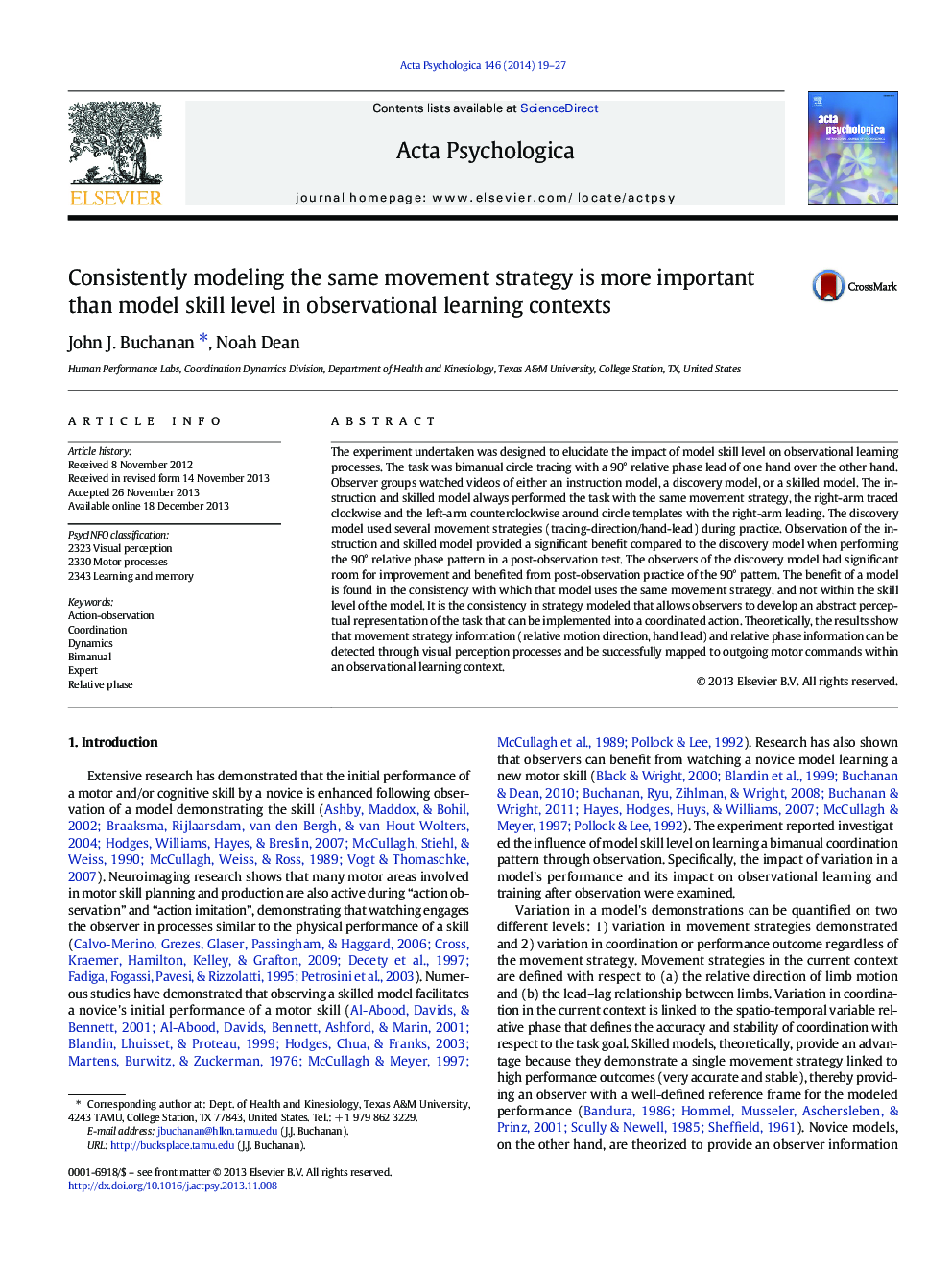| Article ID | Journal | Published Year | Pages | File Type |
|---|---|---|---|---|
| 7277985 | Acta Psychologica | 2014 | 9 Pages |
Abstract
The experiment undertaken was designed to elucidate the impact of model skill level on observational learning processes. The task was bimanual circle tracing with a 90° relative phase lead of one hand over the other hand. Observer groups watched videos of either an instruction model, a discovery model, or a skilled model. The instruction and skilled model always performed the task with the same movement strategy, the right-arm traced clockwise and the left-arm counterclockwise around circle templates with the right-arm leading. The discovery model used several movement strategies (tracing-direction/hand-lead) during practice. Observation of the instruction and skilled model provided a significant benefit compared to the discovery model when performing the 90° relative phase pattern in a post-observation test. The observers of the discovery model had significant room for improvement and benefited from post-observation practice of the 90° pattern. The benefit of a model is found in the consistency with which that model uses the same movement strategy, and not within the skill level of the model. It is the consistency in strategy modeled that allows observers to develop an abstract perceptual representation of the task that can be implemented into a coordinated action. Theoretically, the results show that movement strategy information (relative motion direction, hand lead) and relative phase information can be detected through visual perception processes and be successfully mapped to outgoing motor commands within an observational learning context.
Keywords
Related Topics
Life Sciences
Neuroscience
Cognitive Neuroscience
Authors
John J. Buchanan, Noah Dean,
